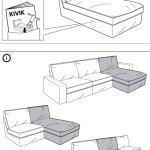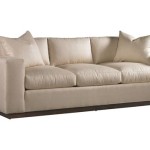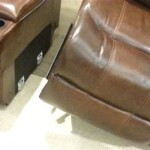Recovering a Sofa
Reupholstering a sofa can breathe new life into a cherished piece of furniture, updating its aesthetic and extending its lifespan. This seemingly daunting task can be accomplished through careful planning and execution, transforming a worn-out sofa into a stylish centerpiece. Understanding the process and the materials involved allows for a smoother and more successful outcome.
Assessing the Sofa's Frame
Before embarking on the reupholstery journey, a thorough assessment of the sofa's frame is crucial. A sturdy and well-constructed frame is essential for long-term durability. Check for any signs of damage, such as cracks, loose joints, or warping. Minor repairs can often be undertaken with wood glue, screws, and reinforcing brackets. However, significant structural damage might require professional intervention or even render the sofa unsuitable for reupholstery.
Gathering Necessary Materials
Once the frame is deemed sound, the next step involves gathering the necessary materials. Selecting the right fabric is paramount, considering factors such as durability, color, pattern, and texture. Measure the sofa carefully to determine the required yardage, adding extra for pattern matching and potential errors. Other essential materials include upholstery tacks, webbing, batting, foam, a staple gun, and sharp scissors.
Removing the Existing Upholstery
The removal of the existing upholstery requires patience and attention to detail. Start by carefully removing the old fabric, taking note of how it was originally attached. This serves as a valuable guide during the re-upholstery process. Label each piece of removed fabric to maintain organization and facilitate pattern matching when applying the new material. This methodical approach helps ensure a smoother transition and minimizes the risk of errors.
Repairing and Replacing the Webbing and Springs
With the old fabric removed, the underlying webbing and springs become accessible. Inspect these components for any signs of wear and tear. Replace any broken or sagging springs and tighten or replace worn webbing. This step is vital for restoring the sofa’s comfort and support. Securely attached webbing and functional springs provide a solid foundation for the new upholstery and contribute to the sofa's overall longevity.
Adding Padding and Batting
Achieving the desired level of comfort and shaping involves adding new padding and batting. Cut the foam and batting to fit the various sections of the sofa, ensuring a smooth and even surface. Secure the padding to the frame using adhesive or staples, paying particular attention to corners and curves. This step plays a critical role in the final appearance and feel of the reupholstered sofa.
Applying the New Fabric
Applying the new fabric is arguably the most rewarding stage of the process. Carefully lay the pre-cut fabric pieces over the corresponding sections of the sofa, ensuring proper alignment and pattern matching. Smooth out any wrinkles or creases before securing the fabric with upholstery tacks or staples. Work systematically, starting from the center and moving outwards, maintaining even tension throughout the process. This precise application ensures a professional-looking finish.
Adding Finishing Touches
Once the new fabric is securely in place, the final step involves adding finishing touches. Trim any excess fabric and reinforce seams as needed. Reattach any decorative elements, such as buttons or cording, to complete the transformation. These final details enhance the overall aesthetic and contribute to a polished, professional result. Regular maintenance, including vacuuming and spot cleaning, will help preserve the newly upholstered sofa for years to come.
Addressing Common Challenges
Reupholstering a sofa can present certain challenges. Pattern matching on complex designs requires careful planning and precise cutting. Working with curved sections or intricate details demands patience and skillful manipulation of the fabric. Addressing these challenges effectively contributes to a successful and satisfying outcome. Consulting experienced upholsterers or utilizing online resources can provide valuable guidance and troubleshooting tips.
Choosing the Right Tools
Having the appropriate tools significantly impacts the ease and efficiency of the reupholstery project. Invest in a quality staple gun with the correct staple size for the fabric and frame. Sharp scissors and a seam ripper are essential for precise cutting and removing existing upholstery. Other useful tools include a measuring tape, pliers, a hammer, and a utility knife. Having the right tools on hand streamlines the process and contributes to a professional-looking result.
Considering Professional Upholstery
While reupholstering a sofa can be a rewarding DIY project, it’s essential to realistically assess one's skill level and the complexity of the project. For intricate designs, delicate fabrics, or extensive frame repairs, seeking professional upholstery services may be the most prudent approach. Professional upholsterers possess the expertise and specialized equipment to handle complex projects efficiently and effectively, ensuring a high-quality and long-lasting result.

Do It Yourself Divas Diy Strip Fabric From A Couch And Reupholster

Recover Your Sofa From Leather To Fabric Stunning Transformation And A Lot Er Than New Rescot Upholstery

How To Reupholster A Couch Without Removing The Old Fabric Erfly House

The Art Of Recovering Old Furniture Luz Custom Curtains Upholstery Work New Orleans Louisiana

How To Reupholster A Couch Without Removing The Old Fabric Erfly House

Reupholster Sofa Is The Cost Really Worth It Abakus

Bringing Furniture Back To Life With This Sofa Reupholstery

Cost To Reupholster A Couch Save By Recovering We Can Fix That

Sofa Reupholstery In Atlanta Ga

Recovering A Quality Duresta Sofa With Excellent Results Rescot Upholstery
Related Posts








